Life Cycles of Fleas
Life Cycles of Fleas
Fleas 101
Fleas are external parasites in the order Siphonaptera, which is made up of 2,500 subspecies, roughly 300 of which are found in the US. Of these 300, the most prominent species to plague us is the Ctenocephalides felis… also known as the “cat flea,” though, this is a misnomer as the Ctenocephalides felis most commonly infect dogs. These insects are exceedingly small, measuring about an 8th of an inch in length and sporting a reddish-brown shell. Roughly 94% of fleas on Earth are known to infect mammals, while 6% feed on avian creatures. Unfortunately, these pests are notorious for causing a host of health problems including FAD (flea allergy dermatitis), anemia, flea-borne typhus, cat scratch disease, and can even pass other parasites to their victims such as tapeworms. 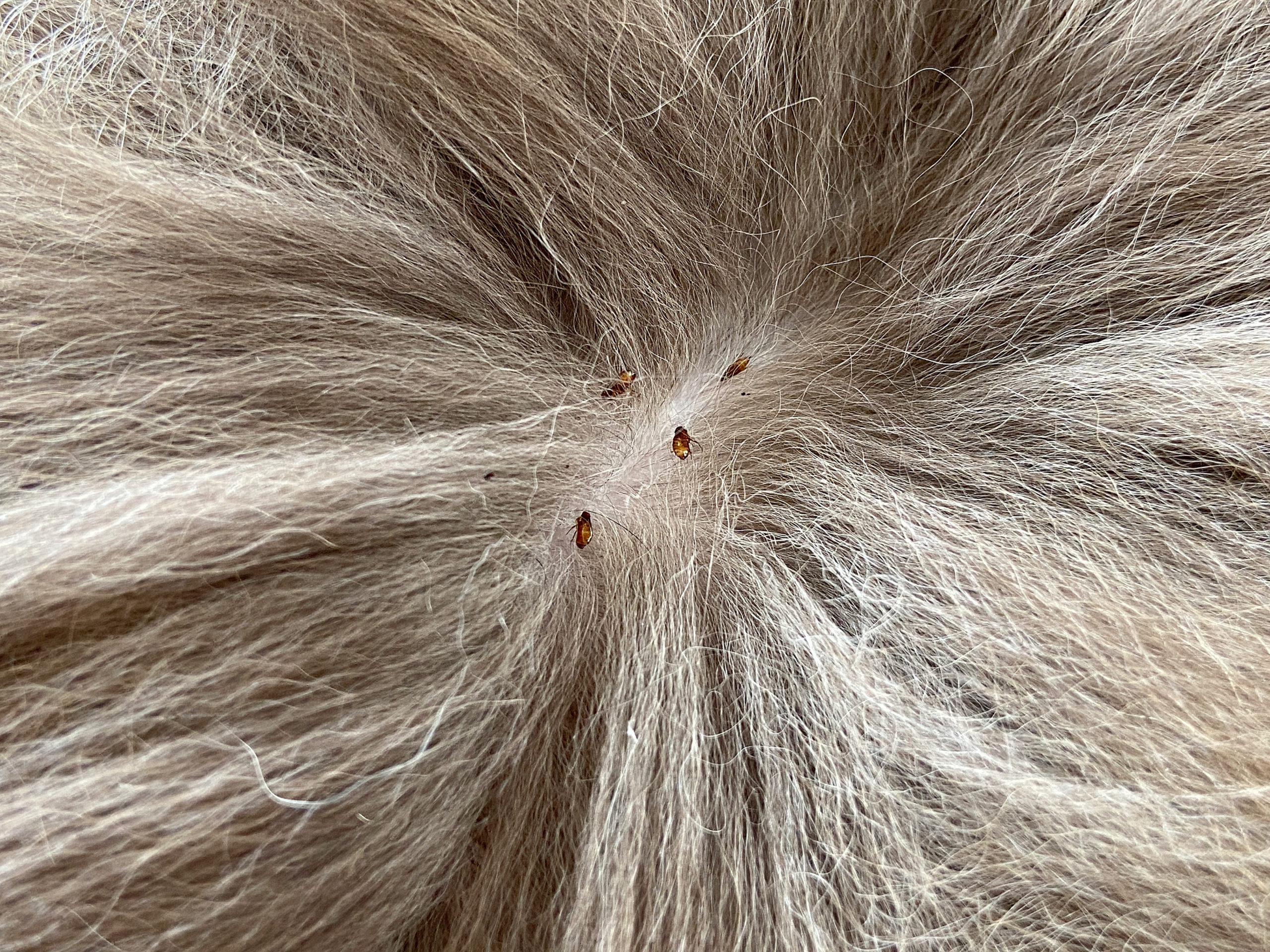
Eggs
Female fleas lay eggs in groups of roughly 25-40 in a single day and are able to produce approximately 2,000 eggs in their lifetime. The eggs are laid on the host will typically fall off into the surrounding environment before hatching, which occurs between 2-5 days after being laid. Flea eggs are exceedingly small, measuring an average of 0.5mm long and have a milky-white, oval appearance. 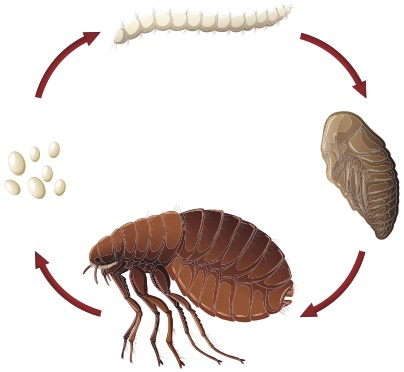
Larva
After hatching from their eggs, fleas pass through three different larval stages all of which are completed in a span of 7-14 days depending on the hospitality of the environment. The three larval stages measure between 1-5mm in length and have the appearance of tan-colored, hairy worms. Throughout these three stages, the larvae do not live or feed on a host, rather, they exist in the environment that their host dropped them in and feed on a variety of organic materials depending on what’s available to them in that location. Surprisingly, flea larvae can survive for a few weeks without food but do need proper feeding before molting into their pupal stage. 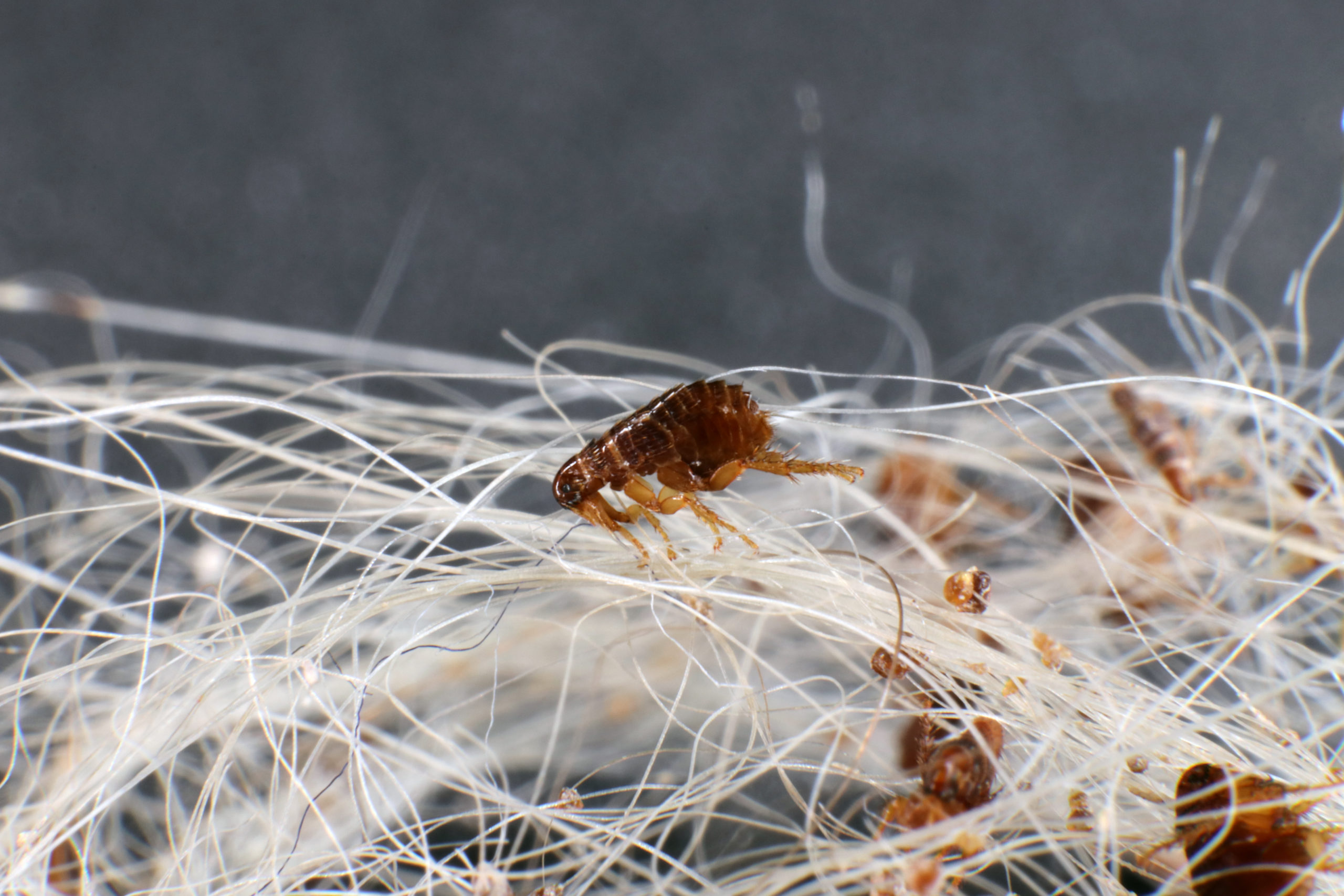
Pupa
Similar to caterpillars, flea pupae undergo a metamorphoses period in which they produce a cocoon using debris collected from their environment. At this time, they remain in a hibernation state as they undergo a bodily transformation to adulthood. The process typically takes 1-2 weeks, however, in certain environments, the pupae can wait up to 4 months before emerging. 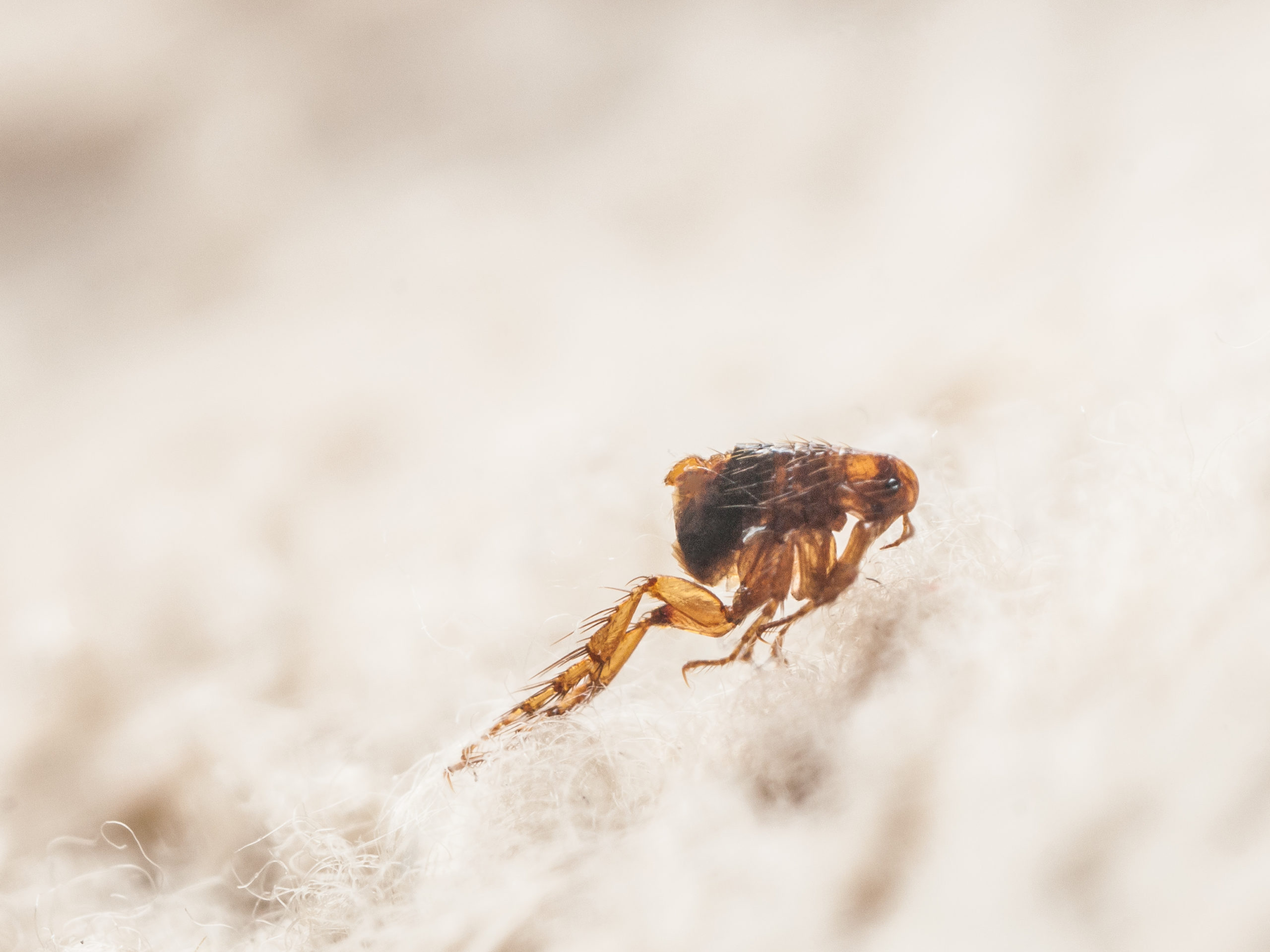
Adults
Stimulated by the vibrations caused by an approaching person or animal, adult fleas will emerge from their pupal cocoons hungrily searching for a host. While adult fleas can survive a number of weeks without feeding, the females are unable to produce eggs in such conditions and require meals before they can reproduce. Adult fleas are reddish-brown, oval-shaped insects that measure about 4mm long, are wingless, and have 6 legs. This stage of the insect’s life lasts 3-14 days and the entirety of a flea’s life is most commonly completed in 28 days, leading to the existence of several generations in a single season. 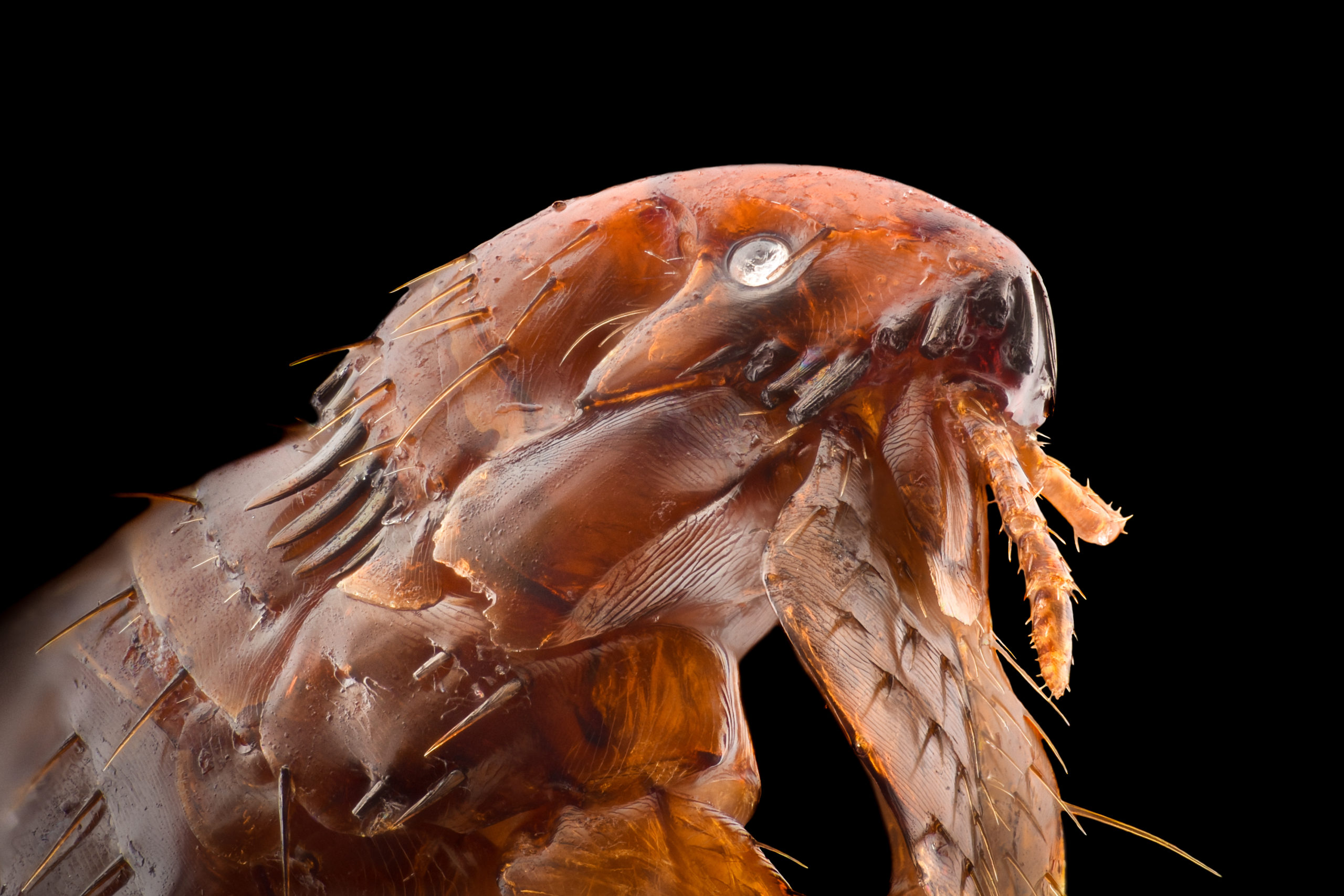
Protecting Your Home Against Fleas
Fleas are far from being simple annoyances and are considered very serious pests due to the variety of health risks they pose. At Pointe Pest control, our flea experts can work with you to rid your home of these nasty parasites. Our treatments target these pests throughout your home and work to not only remove the fleas that are currently present but help prevent any future infestations as well. It is important to note however… if you have a pet that you believe may be infected with the pests, it’s important to use our treatments in unison with veterinary treatments for your infected pets for results to be effective (otherwise, Fido or Mittens might continue to bring them back into your home). Stay safe! Stay flea-free! 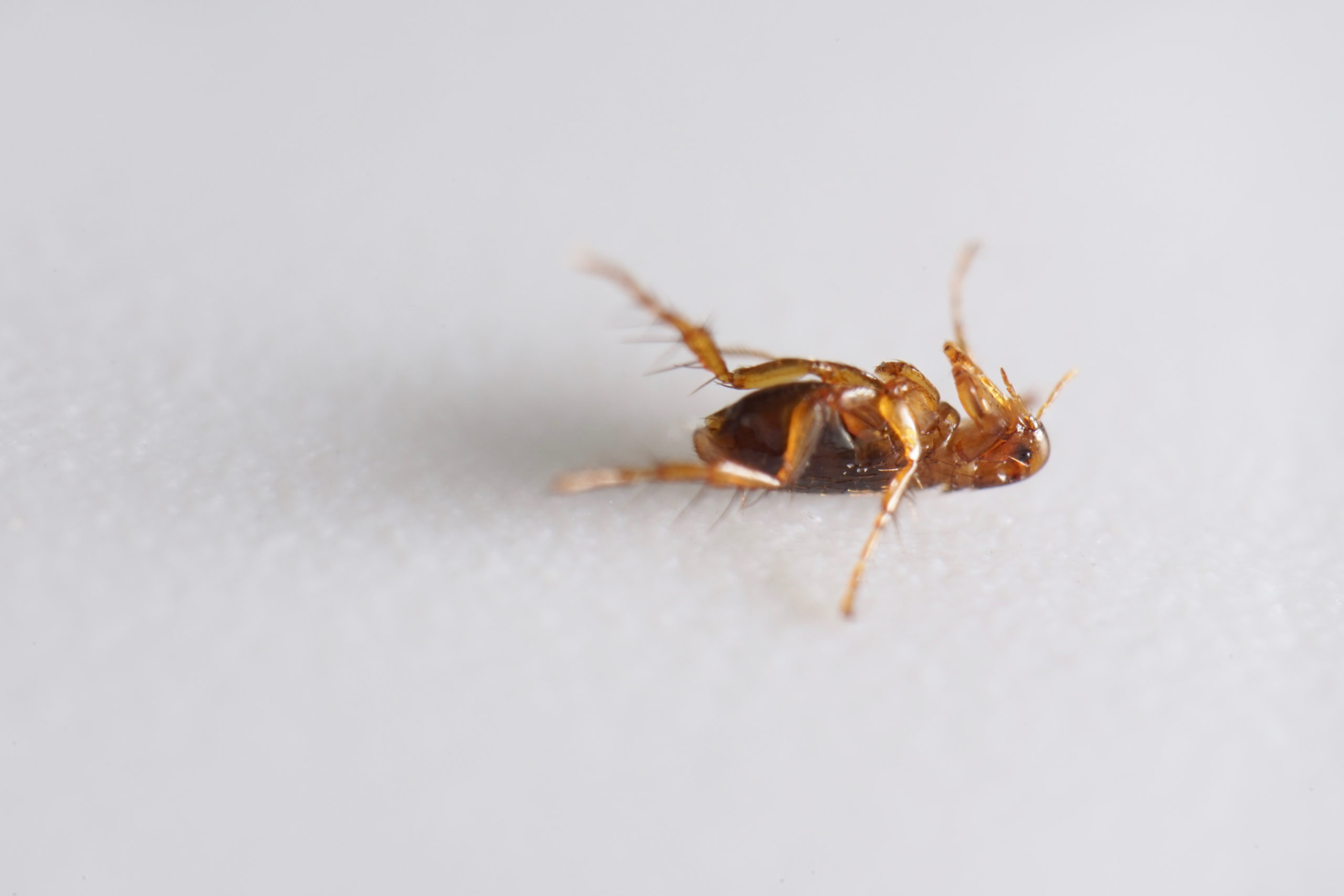
Citations
Anemia (no date) Mayo Clinic. Mayo Foundation for Medical Education and Research. Available at: https://www.mayoclinic.org/diseases-conditions/anemia/symptoms-causes/syc-20351360 (Accessed: September 2020). Fleaborne Diseases of the United States (2020) Centers for Disease Control and Prevention. U.S. Department of Health and Human Services. Available at: https://www.cdc.gov/fleas/diseases.html (Accessed: September 2020). The Hidden Dangers of Flea Bites: What to Look For (no date) The Associated Press. Seresto. Available at: https://apnews.com/sponsored/?prx_t=z40EAq48yAniAPA&prx_ro=s&ntv_fpc=671dc30c-79c6-4e77-b41f-040c722e9642&ntv_fr (Accessed: September 2020). Hill, C. and MacDonald, J. (2008) Fleas, Purdue University . Purdue’s College of Agriculture: Entomology Department. Available at: https://extension.entm.purdue.edu/publichealth/insects/flea.html (Accessed: September 2020). Prevention and Control: Fleas (N/A) Illinois Department of Public Health. The Division of Environmental Health. Available at: http://www.idph.state.il.us/envhealth/pcfleas.htm (Accessed: May 2020).
Request a Free Quote Today
(We do not share your data with anybody, and only use it for its intended purpose)


